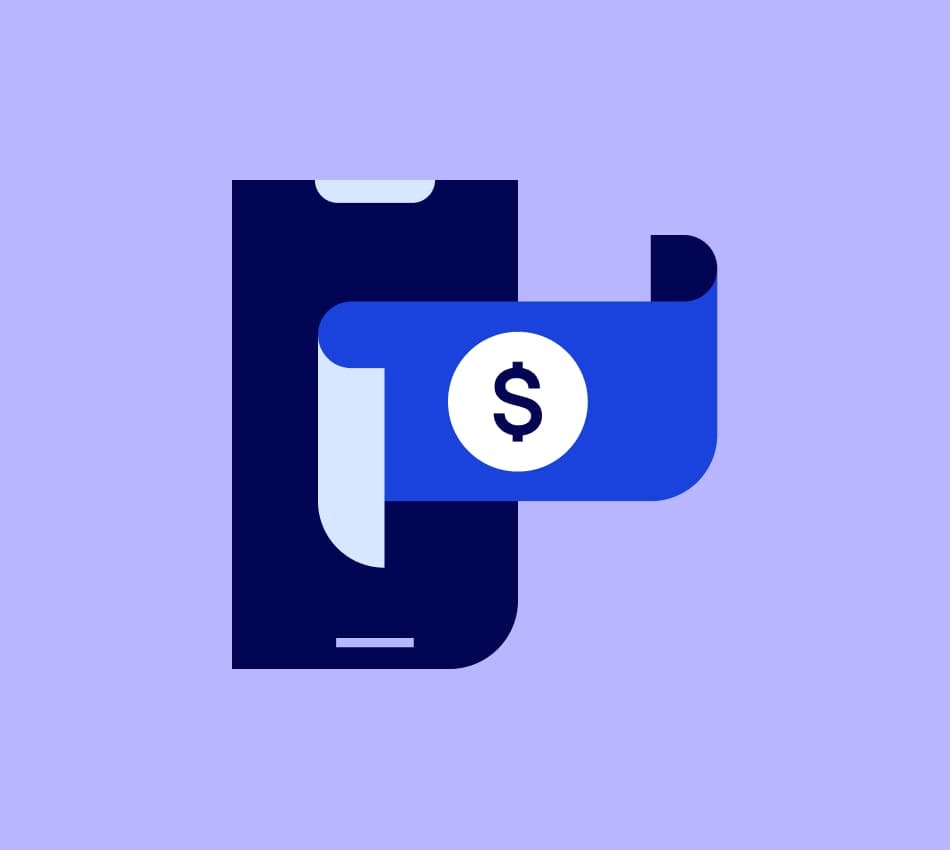While you shouldn’t use your personal profile to accept business payments via mobile payment app, a business account on these apps can help you to simplify how you send and receive payments. Here’s how to use mobile payment apps to streamline your bill pay without risking your funds.
What you need to know
- Key technology innovations in the past 30 years have rapidly increased adoption of mobile financial solutions.
- Payment automation, security features, and cross-platform synchronization make mobile apps viable for small business owners (as long as you use a business profile).
- When adopting a mobile payment app for business, choose an app that integrates with your accounting and accounts payable software.
The evolution of mobile bill pay apps
Coca-Cola accepted the first mobile payment transaction in 1997, with a vending machine that accepted payments via text message. Key innovations since then have rapidly increased adoption of mobile financial solutions. Digital payment apps, digital wallets, and near-field communication (NFC) make most payments possible with just a smartphone.
Using these technologies, banks and other financial providers now provide mobile bill payments through their mobile apps.
Benefits of mobile bill payments
The right features on a mobile app can help you pay your bills on time every month. Doing so consistently will help improve your business credit profile, which can help you get more favorable terms on a future business loan or line of credit.
Versatility and integration
Innovations in mobile app design have helped make mobile payment apps user-friendly, and there are apps suited to different types of payments. Most business banking providers today offer some accounts payable services that connect to your other banking providers and to accounting software like QuickBooks, which is useful for organizing your finances.
Mobile payment apps like Venmo or CashApp offer business accounts that can accept customer payments, and payment processors or merchant accounts accept digital payments. Digital payment networks like Zelle offer similar services between FDIC-insured accounts from specific banks.
Automation features
Most bill pay options provide automation features like recurring payments and payment reminders. These can help you save time by reducing manual entry, and save money by eliminating human error such as late payments.
Security
Like the major banks, mobile bill pay apps sport modern security features like encryption, multi-factor authentication, and biometric authentication. Look for a bill pay solution that’s FDIC-insured. Mobile payment apps like Venmo and CashApp aren’t FDIC-insured, so only use these apps for business transactions if you have a business account, and transfer funds into a business checking account as soon as possible.
Cross-platform connectivity
For business transactions, only use a mobile payment app that connects to your business checking account. Most financial apps use an application programming interface (API) to transfer data or payments between institutions. This means a transaction recorded in your mobile payment app will automatically appear in your accounting software or even your customer management software, reducing labor time, processing delays, and downtime.
Choosing the right mobile bill pay app
Your choice of mobile payment app will depend on your individual and business needs. They all offer the ability to pay bills on the go, which is especially useful for remote or hybrid businesses or business owners who travel a lot.
For personal needs, a mobile payment app that connects to your bank checking or savings account will suffice. For business needs, you’ll need a mobile payment app that integrates with accounting software and your accounts payable platform. Tracking your spending and savings synchronously can help you budget for major expenses and unexpected economic events.
Something else to consider is the cost of fees. Mobile payment app fees for business accounts vary, as do features. You should also contact your business banking provider to see what they have to offer on their basic mobile app.
Challenges and solutions for implementation
Implementing any new technology into your business operations requires an adjustment period, though mobile payment apps are best suited to small customer-facing businesses who may be more flexible than more established companies.
To keep your money secure, connect your business checking, accounts payable, expense tracking, and accounting platforms to your mobile payment app as soon as possible to keep your records in sync. Be sure to transfer any funds to an FDIC-insured business checking account as soon as possible, as mobile payment apps are not insured in case of fraud or collapse.
Simplify your bill payments with Bluevine Business Checking.
